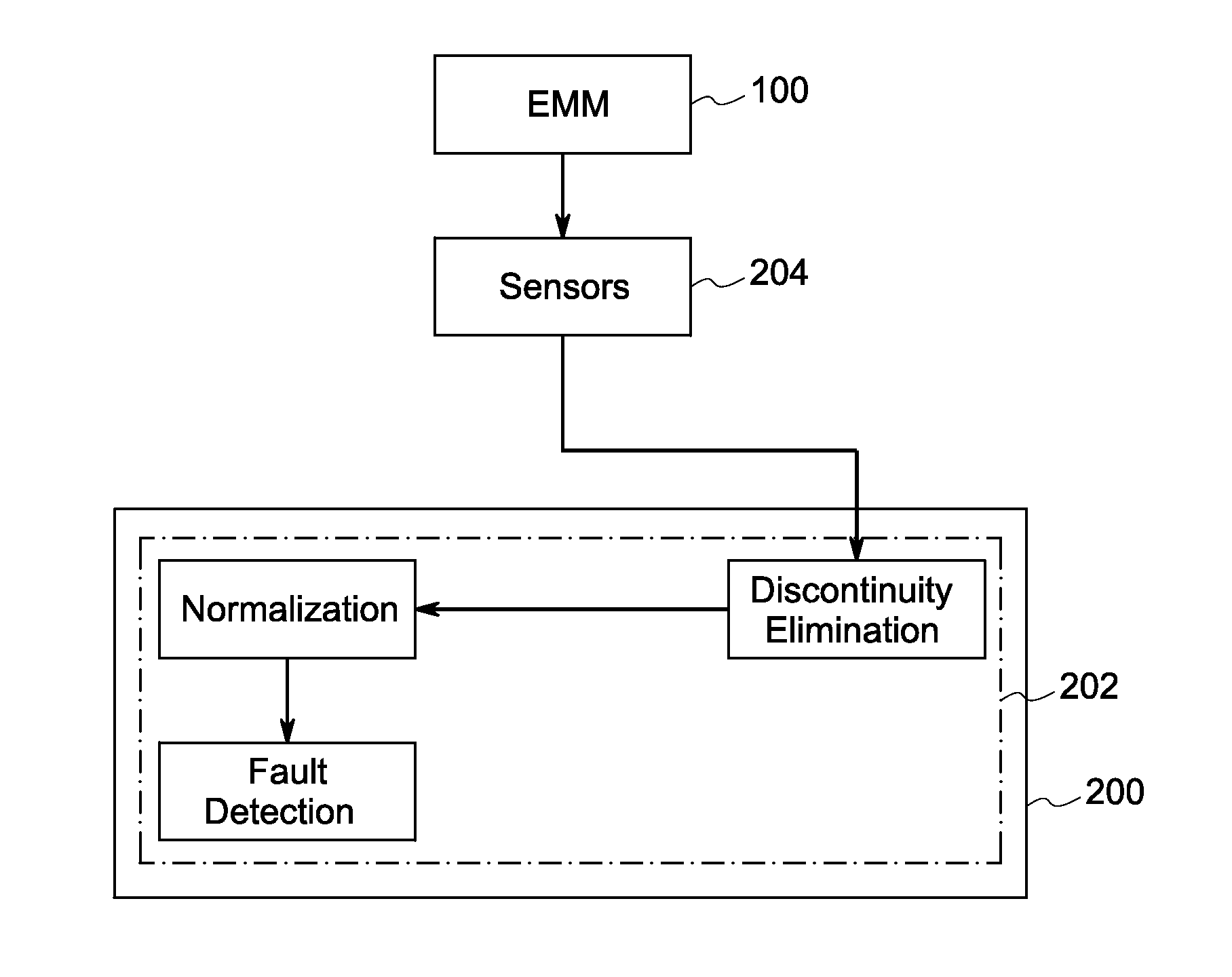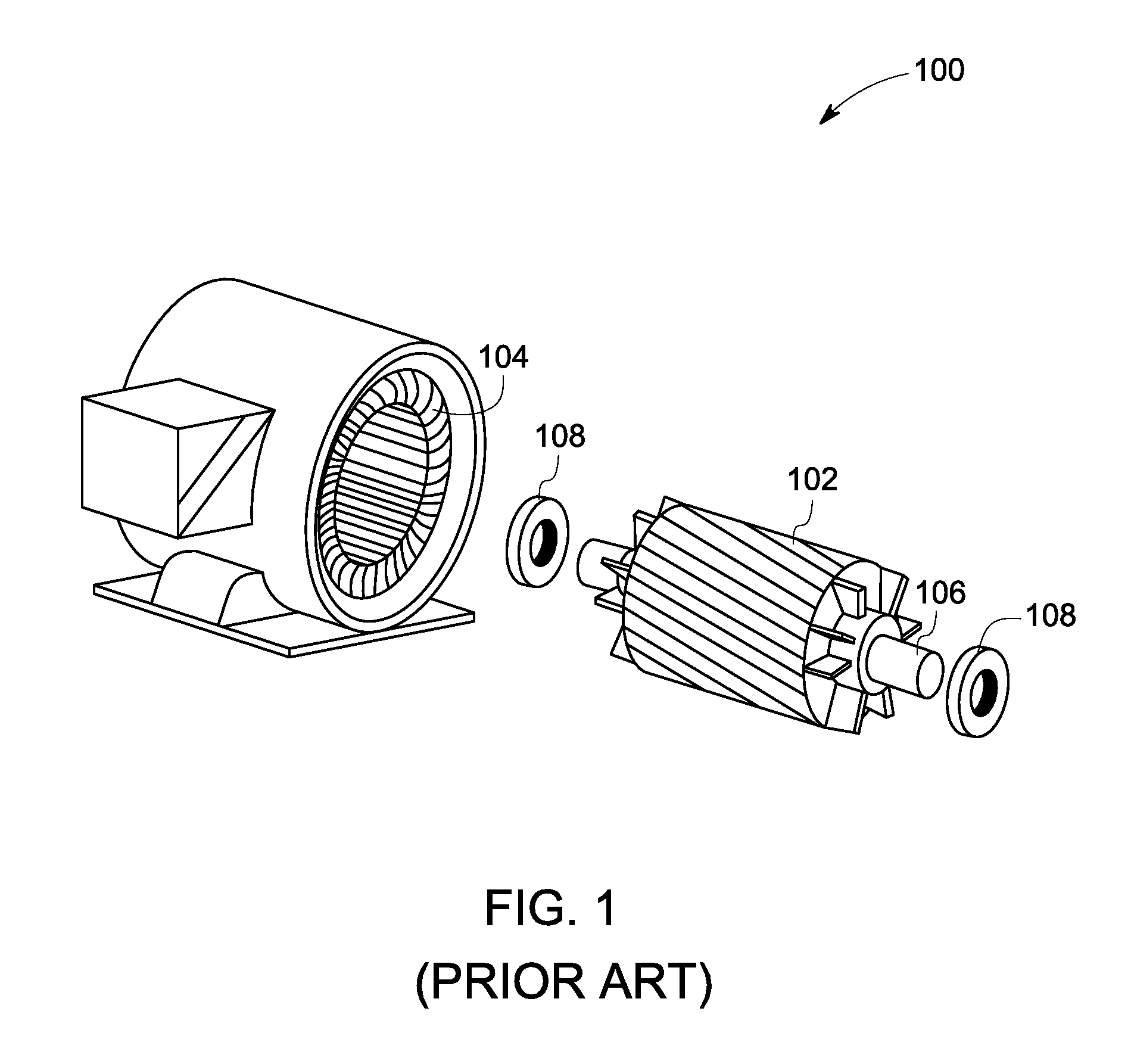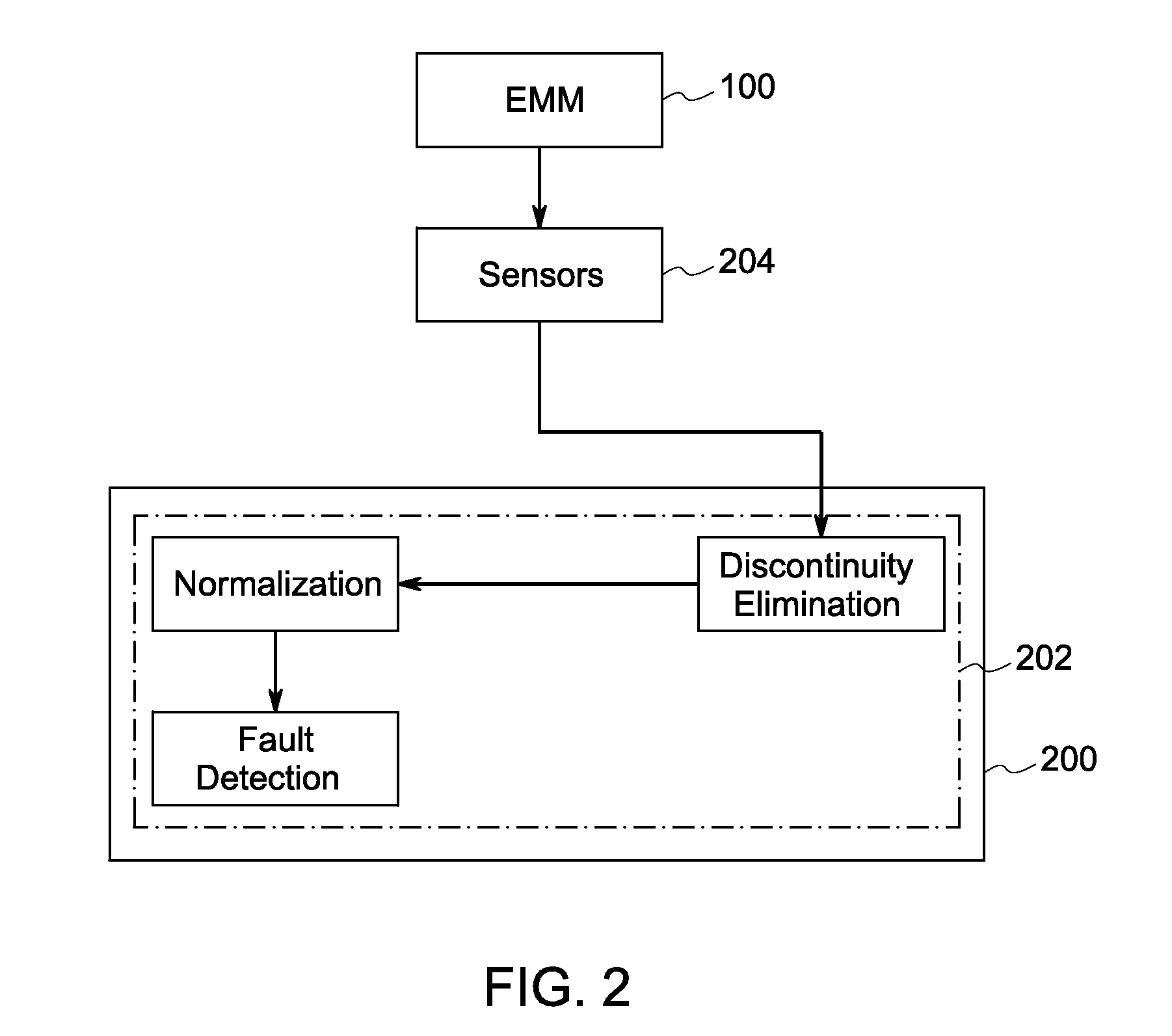Broken rotor bar detection based on current signature analysis of an electric machine
a technology of current signature analysis and electric machines, applied in the direction of electric motor control, control systems, instruments, etc., can solve the problems of rotor bars, drive-train failure, and variety of faults in the electrical mechanical system
- Summary
- Abstract
- Description
- Claims
- Application Information
AI Technical Summary
Benefits of technology
Problems solved by technology
Method used
Image
Examples
Embodiment Construction
[0013]Reference will be made below in detail to exemplary embodiments of the invention, examples of which are illustrated in the accompanying drawings. Wherever possible, the same reference numerals used throughout the drawings refer to the same or like parts.
[0014]A spectrum analysis based technique for high sensitivity detection of broken rotor bar faults in an electromechanical machine (EMM) is described herein. The technique provides for differentiating a faulty EMM rotor bar's condition from normal or admissible conditions based on possibly subtle changes in the magnitude of electric signatures received from the EMM. The dominant components in electric signals received from a typical electromechanical machine are the supply fundamental and harmonics, the eccentricity harmonics, the slot harmonics, the saturation harmonics, and other components from unknown sources including environmental noise. Since such dominant components exist before and after the presence of rotor bar faul...
PUM
 Login to View More
Login to View More Abstract
Description
Claims
Application Information
 Login to View More
Login to View More - R&D
- Intellectual Property
- Life Sciences
- Materials
- Tech Scout
- Unparalleled Data Quality
- Higher Quality Content
- 60% Fewer Hallucinations
Browse by: Latest US Patents, China's latest patents, Technical Efficacy Thesaurus, Application Domain, Technology Topic, Popular Technical Reports.
© 2025 PatSnap. All rights reserved.Legal|Privacy policy|Modern Slavery Act Transparency Statement|Sitemap|About US| Contact US: help@patsnap.com



